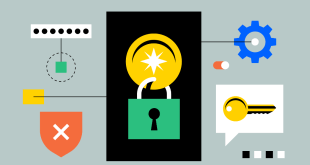In today’s digital landscape, web applications have become essential for businesses, from offering online services to engaging customers. However, with increasing cyber threats, protecting these applications is paramount. This is where Web Application Firewalls (WAFs) play a pivotal role in safeguarding web applications from various attacks. In this comprehensive blog, we explore the significance of Zero Trust Architecture in enhancing the capabilities of modern WAFs. Let’s delve into how this groundbreaking approach is reshaping the realm of cybersecurity.
Understanding Web Application Firewalls (WAFs)
Web Application Firewalls are security solutions designed to protect web applications from various online threats, including SQL injection, cross-site scripting (XSS), and other malicious activities. Traditional WAFs have proven to be effective, but as cyberattacks evolve, so must our defenses. This is where the concept of Zero Trust Architecture comes into play.
The Emergence of Zero Trust Architecture
Zero Trust Architecture, also known as Zero Trust Security, is a revolutionary approach that operates on the principle of “never trust, always verify.” Unlike traditional security models that relied on perimeter defenses, Zero Trust assumes that no device, user, or application should be inherently trusted. Instead, it continuously verifies and authenticates every request, ensuring comprehensive protection.
Advantages of Implementing Zero Trust Architecture
Enhanced Security Posture
Zero Trust Architecture significantly improves the security posture of web applications. By eliminating the concept of trust, it minimizes the attack surface and reduces the risk of unauthorized access and data breaches.
Protection Against Insider Threats
One of the key benefits of Zero Trust Architecture is its ability to defend against insider threats. Even if an attacker gains access to the network, the continuous verification process prevents lateral movement, limiting the potential damage.
Seamless User Experience
Contrary to the misconception that robust security compromises user experience, Zero Trust Architecture streamlines access controls. It ensures that legitimate users can access the required resources seamlessly.
Comprehensive Visibility and Control
Zero Trust Architecture provides organizations with a granular view of user activities, allowing them to monitor and control access at a detailed level. This enhances incident response and aids in threat detection.
Scalability and Flexibility
Modern WAFs integrated with Zero Trust Architecture can scale effortlessly to accommodate the growing needs of businesses. It offers flexibility in adapting to different infrastructures and deployment models.
How Zero Trust Architecture Complements WAFs
The Integration of AI and ML
Zero Trust Architecture integrates artificial intelligence and machine learning algorithms to detect anomalous behavior and potential threats proactively. By analyzing vast amounts of data, it can identify patterns indicative of cyberattacks.
Continuous Risk Assessment
Zero Trust Architecture operates based on continuous risk assessment. Every access request undergoes authentication and authorization checks, ensuring that users and devices remain under scrutiny.
Adaptive Access Controls
Unlike traditional WAFs with static access rules, Zero Trust Architecture incorporates dynamic and adaptive access controls. It assesses context-based factors such as user location, device health, and time of access to determine authorization levels.
Commonly Asked Questions
Q1: How does Zero Trust Architecture improve cybersecurity for web applications?
A1: Zero Trust Architecture improves cybersecurity by eliminating inherent trust and implementing continuous verification, minimizing the attack surface and preventing unauthorized access.
Q2: Can Zero Trust Architecture defend against insider threats effectively?
A2: Yes, Zero Trust Architecture is designed to counter insider threats by preventing lateral movement even if attackers gain access to the network.
Q3: Does Zero Trust compromise user experience with strict access controls?
A3: No, Zero Trust Architecture streamlines access controls to ensure legitimate users experience seamless access to resources.
Q4: What advantages does Zero Trust bring to WAFs?
A4: Zero Trust complements WAFs with AI-driven threat detection, continuous risk assessment, and adaptive access controls, enhancing overall security.
Q5: Is Zero Trust Architecture scalable and adaptable to different environments?
A5: Yes, Zero Trust Architecture offers scalability and flexibility to accommodate diverse infrastructures and deployment models.
Final Words
In today’s cyber landscape, combining the power of modern WAFs with Zero Trust Architecture is crucial to staying ahead of sophisticated threats. Embracing the “never trust, always verify” approach empowers organizations with an enhanced security posture, seamless user experience, and comprehensive control over their web applications. With the integration of AI, continuous risk assessment, and dynamic access controls, Zero Trust Architecture is redefining cybersecurity, making it more robust and resilient than ever.
 webfily
webfily



